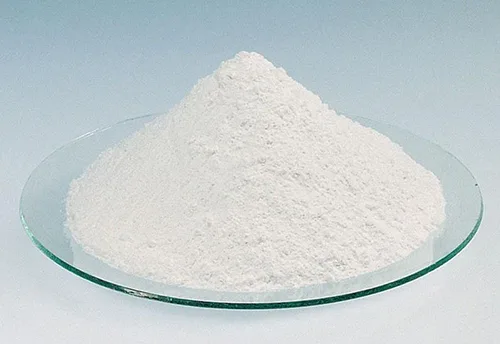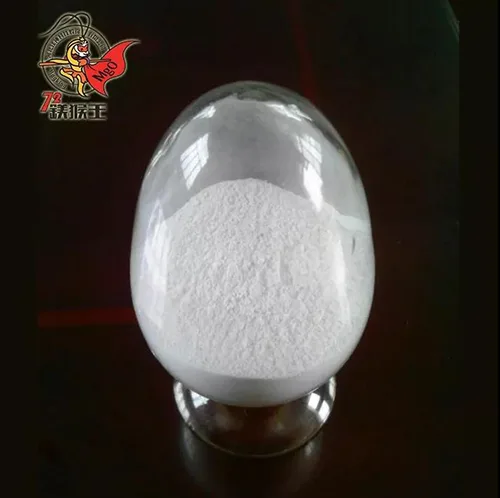Magnesium oxide (MgO) is a versatile inorganic compound with the chemical formula MgO. Appearing as a white solid, it is known for its high melting point (over 2800°C) and basic (alkaline) nature. Thanks to these remarkable physical and chemical properties, magnesium oxide plays crucial roles across diverse industries, from manufacturing and environmental protection to healthcare, food processing, and agriculture. This blog explores the wide-ranging benefits of magnesium oxide, providing a complete overview for industries, researchers, and consumers alike.
Industrial Applications
Refractory Materials
One of the most prominent uses of magnesium oxide is in the production of refractory materials. Thanks to its extremely high melting point and exceptional thermal stability, MgO is ideal for manufacturing refractory bricks, linings for steel furnaces, kilns, and incinerators. Its resistance to chemical attack from basic slags makes it essential in the steel and cement industries.
Key Benefits:
-
High-temperature resistance
-
Chemical stability
-
Longevity under extreme conditions
Environmental Protection and Pollution Control
Magnesium oxide is highly effective in environmental applications due to its alkaline nature. It is commonly used to treat acidic wastewater, neutralizing harmful acids and heavy metals. Additionally, it plays a role in flue gas desulfurization, absorbing acidic gases such as sulfur dioxide (SO₂) from industrial emissions.
Key Benefits:
-
Neutralization of acidic waste
-
Heavy metal stabilization
-
Air pollution control
Flame Retardants
In the fire protection field, magnesium oxide acts as a flame retardant, especially in building materials, textiles, and plastics. It reduces flammability by releasing water upon heating, which helps to cool materials and prevent ignition.
Key Benefits:
-
Non-toxic flame retardancy
-
Environmental safety
-
Enhanced fire resistance
Electronics and Ceramics
MgO is valued in electronics and ceramics for its insulating properties and ability to withstand high voltages and temperatures. It is used in the manufacture of:
-
Ceramic parts
-
Insulation materials
-
Substrates for thin-film technology
Key Benefits:
-
Electrical insulation
-
Thermal resistance
-
Dimensional stability
Other Industrial Uses
Rubber and Plastics
Magnesium oxide serves as a curing agent, acid acceptor, and heat stabilizer in the production of rubber and plastics. It improves durability and prevents degradation during processing.
Coatings
In coatings, MgO enhances corrosion resistance and acts as a filler to improve the mechanical properties and chemical resistance of paints and protective layers.
Medical Applications
Digestive Health
Antacids
Magnesium oxide is commonly formulated into over-the-counter antacid products. It neutralizes excess stomach acid, providing relief from heartburn, indigestion, and gastric ulcers.
Mechanism:
MgO reacts with stomach acid (HCl) to form magnesium chloride (MgCl₂) and water, thereby reducing stomach acidity without causing significant side effects.
Laxatives
Magnesium oxide is used as an osmotic laxative for short-term relief of occasional constipation. It draws water into the intestines, softening stools and stimulating bowel movements.
Advantages:
-
Gentle action compared to stimulant laxatives
-
Suitable for elderly patients under medical guidance
Nutritional Supplements
Magnesium is essential for muscle function, nerve transmission, bone health, and heart rhythm regulation. Magnesium oxide supplements help prevent or treat magnesium deficiency caused by poor diet, chronic diseases, or certain medications (such as diuretics).
Benefits of Magnesium Supplementation:
-
Prevention of migraines
-
Reduction of blood pressure in hypertensive patients
-
Improvement of insulin sensitivity in diabetics
-
Support for mental health and stress management
Note: Proper dosage is critical to avoid diarrhea, electrolyte imbalance, or other side effects.
Topical Drugs
In dermatology, magnesium oxide is included in creams, ointments, and lotions to treat skin conditions such as minor irritations, rashes, and inflammation. It acts as:
-
A soothing agent
-
An absorbent for excess moisture
-
A protective barrier against irritants
Pharmaceutical Excipients
Magnesium oxide functions as a vital excipient in tablet and capsule manufacturing. It serves as:
-
A filler to add volume
-
A flow agent to prevent powder clumping
-
A pH adjuster to stabilize active pharmaceutical ingredients (APIs)
Food Applications
Food Additives
Nutritional Enhancers
Magnesium oxide is used to fortify foods and beverages with magnesium, an essential mineral crucial for metabolic function, cardiovascular health, and bone strength. It is commonly added to:
-
Breakfast cereals
-
Energy bars
-
Infant formula
-
Fortified beverages
pH Regulators
Due to its alkaline properties, magnesium oxide is employed to adjust and stabilize the pH levels in food processing, helping to:
-
Improve food texture
-
Extend shelf life
-
Enhance flavor profiles
Processing Aids
Anti-caking Agents
Magnesium oxide prevents powders like salt, sugar, flour, and spices from clumping, ensuring ease of handling and consistent product quality during storage and packaging.
Desiccant
MgO is an efficient moisture absorber, making it an effective natural desiccant to keep packaged foods dry and fresh without the need for synthetic chemicals.
Sports Drinks
Electrolyte sports drinks and rehydration solutions often contain magnesium to help restore electrolyte balance lost through sweating. Magnesium oxide supplementation in sports drinks helps:
-
Improve muscle function
-
Prevent cramps
-
Accelerate recovery
Other Applications
Agriculture
Soil Conditioners
Magnesium oxide is used to correct soil acidity and supply essential magnesium to plants, thereby:
-
Enhancing nutrient uptake
-
Improving crop yields
-
Increasing resistance to plant diseases
Animal Feed Additives
In livestock nutrition, MgO is an important additive for:
-
Preventing magnesium deficiency in grazing animals (grass tetany)
-
Supporting bone development and metabolism
-
Enhancing milk production in dairy cattle
Energy Sector
Magnesium oxide plays a role in emerging energy technologies, including:
-
Solid oxide fuel cells (SOFCs) as electrolyte stabilizers
-
Catalysts for hydrogen production
-
Battery components for energy storage systems
These applications highlight MgO’s potential to contribute to the global shift toward sustainable energy solutions.
Conclusion
Magnesium oxide (MgO) stands as a cornerstone material across numerous industries, offering unparalleled benefits due to its unique combination of high melting point, alkalinity, and chemical stability. From strengthening steel production to enhancing digestive health and enriching our food supply, its applications are as versatile as they are essential. At Meishen Technology, we are proud to be a leading manufacturer of high-quality magnesium oxide products, offering tailored solutions for industrial, medical, food, and agricultural applications.
Contact Meishen today to learn how our premium MgO products can support your business needs!
FAQs
Is magnesium oxide safe for consumption in foods?
Yes, magnesium oxide is classified as GRAS (Generally Recognized as Safe) by the U.S. FDA when used in accordance with proper regulations and dosage guidelines.
What is the difference between light and heavy magnesium oxide?
Light magnesium oxide has a lower bulk density and higher surface area, making it ideal for pharmaceutical and food applications, whereas heavy magnesium oxide has a higher bulk density, suited for industrial uses like refractory materials.
Can magnesium oxide be used in cosmetic products?
Yes, magnesium oxide is used in some cosmetic formulations as a skin protectant, absorbent, and pH adjuster, helping to improve product stability and user experience.



